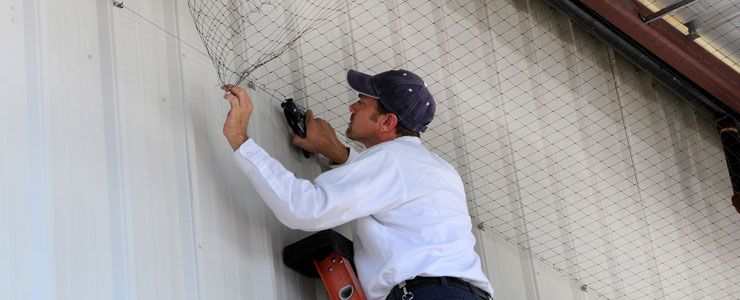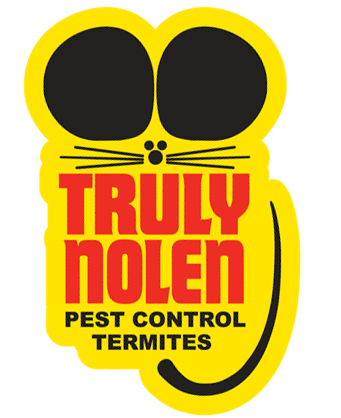
The exterior inspection focuses on any architectural feature that provides a place for a bird to sit and/or roost. Outward signs of bird activity are bird droppings below the area where birds are sitting, the presence of feathers, nesting materials, and/or eggs/chicks. Birds tend to sit on:
- Roofline and peaks
- Exposed beams under covers and canopies
- Exterior light fixtures
- Signage
- Rooftop environmental control units and exhaust fans/pipes
The pest professional makes thorough notes of all findings and always invites the customer to participate in the inspection process. He then develops a graph and site plan, and takes relevant photos to document his findings.
Control & Prevention Measures:
Live One-Way Trapping
This focuses on population reduction and includes food and water for the bird. Check no less than twice weekly for bird removal and reset. Suggest the tech trap before netting off an area where birds are already rousting and/or nesting. Unit is commonly placed on the roof top out of site of most employees, customers and the general public. Birds are generally euthanized after they are trapped as they tend to return to the same sight.
Nest Removal
The technician physically removes the nesting materials, eggs, etc. He bags the debris and seals the bag for off-site disposal. Caution: The tech must wear a respirator or dust mask and gloves when physically removing nesting materials and fecal matter. If the job is large, use of a Tyvek suit and respirator are required.
Sanitation and Power Wash
Before deterrent measures are installed, the tech performs clean-up procedures to remove evidence of the bird infestation and sanitize affected surfaces. This is primarily focused on power washing dried fecal material from canopy tops, walls, sidewalks, benches, etc.
Control and/or Exclusionary Measures
Based on the conditions of the infestation, the technician installs one or more of the following bird deterrents:
- Polyethylene Netting – A mechanical deterrent. Stretched and affixed across/over area where birds were rousting to prevent bird access.
- Bird Spikes – A mechanical deterrent. Spike strips are affixed to prevent birds from landing on roof line, eaves, window ledges, beams, and/or signage.
- Daddi Long Legs – A mechanical deterrent. Ideal for the parking lot lights and atop environmental units. Legs of unit cascade and interfere with the area where birds sit.
- Shock Strip – An electrical deterrent. The strip is affixed to the roofline, eaves, window ledges, beams and/or signage. It emits a low level shock to startle (not injure) the bird and cause it to flee. Unit requires electrical service or can be installed with a solar charger.
- Bird Slide – A mechanical deterrent. This polycarbonate device attaches to window sills, ledges, angle irons, I-beams, etc. to create a slippery 45 degree angle that causes the bird to literally slide off.
